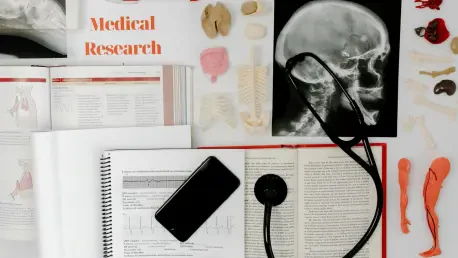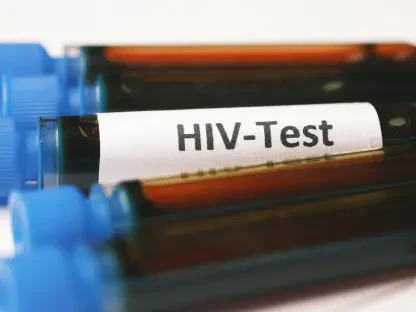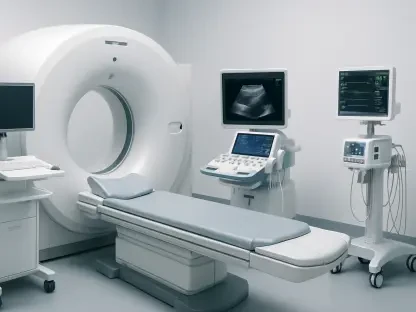For millions around the globe, the aftermath of a SARS-CoV-2 infection has introduced a lingering challenge known as Long COVID, with brain fog emerging as one of its most debilitating and widespread symptoms, affecting over 80% of those diagnosed with this chronic condition. Brain fog clouds the mind with persistent difficulties in memory, concentration, and mental sharpness, often disrupting the ability to perform even routine tasks. This cognitive haze has baffled both patients and medical professionals, as the underlying reasons remained elusive, leaving many without effective solutions or clear diagnoses. The absence of concrete biomarkers has only compounded the frustration, making it difficult to validate the experiences of those affected. However, a pioneering study conducted by Professor Takuya Takahashi at Yokohama City University in Japan has recently illuminated a biological explanation for this perplexing symptom, offering a promising step forward in understanding and potentially alleviating the burden of Long COVID.
This research represents a significant shift in the scientific approach to Long COVID, moving beyond mere observation of symptoms to uncovering measurable changes in the brain that correlate with cognitive impairment. The findings not only affirm the real, tangible struggles of patients but also underscore the pressing need to address this condition on a global scale, given its vast socioeconomic impact. With hundreds of millions grappling with Long COVID worldwide, identifying the root of brain fog could pave the way for transformative solutions. The study’s implications reach far beyond academic circles, holding the potential to reshape how healthcare systems respond to this enduring public health crisis.
Unveiling the Biological Basis of Brain Fog
A Novel Imaging Approach
The cornerstone of this groundbreaking research lies in the application of [11C]K-2 AMPAR PET imaging, a cutting-edge technology that enables scientists to visualize AMPA receptors (AMPARs) within the living human brain. These receptors are fundamental to processes like memory and learning, making them a critical focus for investigating cognitive disruptions. By meticulously comparing brain scans from 30 Long COVID patients against those of 80 healthy individuals, the research team identified a notable widespread increase in AMPAR density among those affected. This discovery marks the first time a direct biological link has been established between such brain changes and the severity of brain fog, providing a clearer picture of what disrupts mental clarity in Long COVID patients. The precision offered by this imaging method opens up new avenues for exploring neurological impacts stemming from the condition.
This innovative imaging approach also highlights the challenges previously faced in studying neuronal communication at a molecular level. Traditional methods often fell short in capturing dynamic brain changes in real time, leaving gaps in understanding how Long COVID affects cognition. The ability to measure AMPAR density with such accuracy offers a significant leap forward, not just for this condition but potentially for other neurological disorders as well. It provides a window into the brain’s inner workings, revealing how subtle alterations can lead to profound symptoms. This technological advancement sets a new standard for research, emphasizing the importance of detailed visualization in unraveling complex health issues.
Connecting Inflammation to Cognitive Decline
Another pivotal finding from the study is the intricate connection between elevated AMPAR density and systemic inflammation, a frequent lingering effect of COVID-19. The research indicates that inflammation, often tied to immune system dysregulation in Long COVID, may influence how receptors manifest in the brain, thereby intensifying cognitive challenges. By analyzing inflammatory markers in patients, the team found a clear correlation with the observed brain changes, suggesting that the body’s prolonged immune response plays a significant role in neurological symptoms. This insight reveals the multifaceted nature of Long COVID, where effects are not confined to one system but ripple across both body and mind, necessitating a comprehensive approach to treatment.
This link between inflammation and brain function also sheds light on why Long COVID symptoms can vary so widely among individuals. The interplay between immune responses and neurological health suggests that personalized medical strategies might be necessary to address the unique ways inflammation impacts each patient. It points to a broader need for integrating immune and neurological research to fully grasp how viral infections can leave lasting imprints on cognitive abilities. Such findings encourage a deeper exploration into how systemic health influences mental processes, potentially guiding future studies on other post-viral conditions that exhibit similar patterns of cognitive decline.
Implications for Diagnosis and Treatment
A Path to Objective Diagnosis
Before this study, diagnosing Long COVID, particularly brain fog, often hinged on subjective accounts from patients, as no reliable biological markers existed to confirm the condition. The introduction of AMPAR PET imaging has dramatically altered this landscape, achieving an impressive sensitivity of 100% and specificity of 91% in distinguishing Long COVID patients from healthy controls. Such precision positions this technology as a potential cornerstone for clinical diagnosis, filling a critical gap in medical practice. For those affected, this could translate to quicker, more definitive validations of their condition, alleviating the burden of uncertainty and skepticism they often face. Meanwhile, healthcare providers gain access to a robust tool for guiding patient care and monitoring the progression of symptoms over time.
The significance of an objective diagnostic method cannot be overstated, especially in a context where Long COVID has often been misunderstood or downplayed. This imaging technique offers a way to substantiate patient experiences with hard data, fostering greater trust between medical professionals and those seeking help. It also lays the groundwork for standardizing diagnostic protocols, which could streamline how Long COVID cases are identified and managed across different healthcare systems. As a result, this advancement not only enhances clinical accuracy but also contributes to a broader recognition of Long COVID as a legitimate and urgent health concern requiring focused attention.
Targeting AMPARs for Therapy
Equally compelling is the identification of AMPARs as a viable target for therapeutic intervention, a development that could redefine Long COVID treatment. The study suggests that developing medications to modulate AMPAR activity might help reduce brain fog, offering a pathway to restore cognitive function for countless individuals. This approach marks a departure from merely addressing symptoms to tackling a specific biological mechanism at the heart of the issue. Professor Takahashi and his team have urged the healthcare industry to prioritize actionable solutions, highlighting the critical need to bring these scientific insights into clinical settings. While additional research is essential to fine-tune such therapies, the prospect of targeted interventions brings renewed optimism to those burdened by the cognitive effects of Long COVID.
Beyond the immediate potential for drug development, this finding sparks a broader conversation about how to address neurological symptoms in post-viral conditions. It raises the possibility of adapting similar strategies for other disorders involving receptor dysfunction, potentially benefiting a wider range of patients. The focus on AMPARs also underscores the importance of investing in molecular-level research to uncover hidden drivers of chronic conditions. As the medical community builds on these insights, there is a clear call to accelerate the translation of laboratory discoveries into practical treatments, ensuring that the benefits of this research reach those in need as swiftly as possible.
Building Momentum for Future Solutions
Reflecting on the strides made by this research, it’s evident that the journey to fully address Long COVID brain fog took a significant leap forward with the identification of AMPA receptors as a key factor. The use of advanced imaging to uncover these biological underpinnings, alongside the connection to inflammation, provides a foundation for understanding a symptom that once seemed intangible. This work also sets a precedent for diagnostic innovation, achieving unparalleled accuracy in distinguishing affected individuals from healthy counterparts. Looking ahead, the focus must shift to harnessing these discoveries for practical impact—whether through developing targeted therapies to modulate receptor activity or refining diagnostic tools for widespread clinical use. Continued collaboration between researchers, healthcare providers, and industry stakeholders will be crucial to ensure that the momentum from this breakthrough translates into tangible relief for the millions still navigating the challenges of Long COVID.









